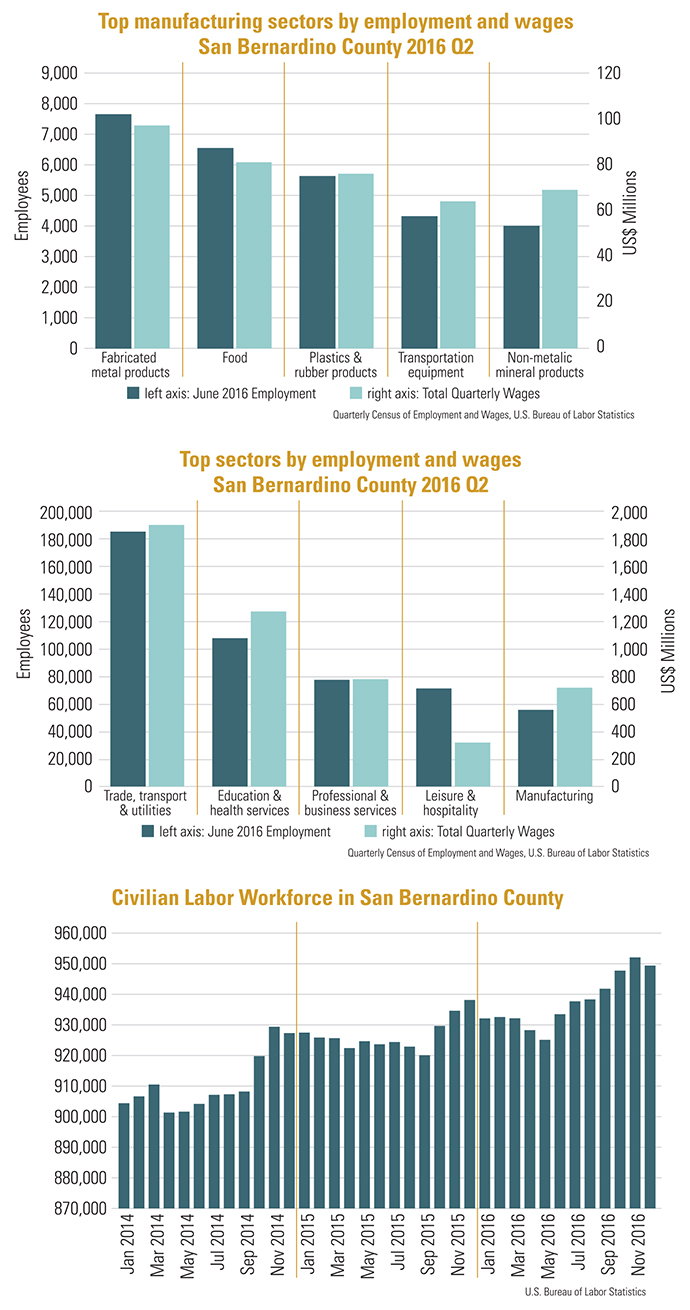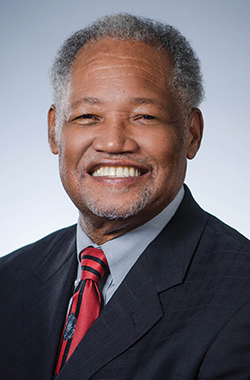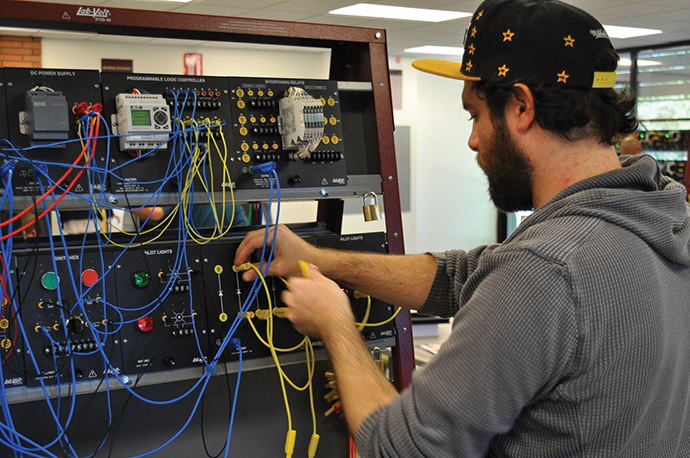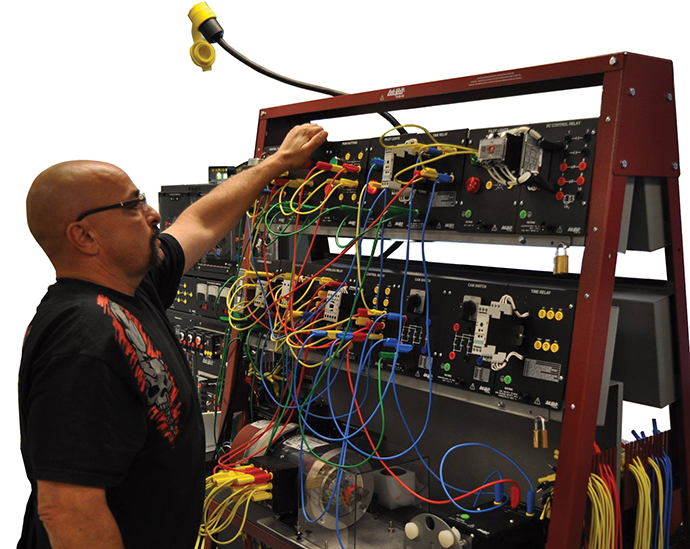A lot of communities like to talk about what they do to support workforce development. In San Bernardino County, California, 50 miles east of Los Angeles, they actually do it.

America’s largest county in land mass at over 20,000 square miles and its 12th-most-populous with more than 2 million people, San Bernardino trains and equips its workforce of 960,000 people at a level that is unmatched virtually anywhere else in the US. In fact, its workforce development programs consistently garner top national awards and rankings.
Steve Tyrrell, maintenance manager at Mitsubishi Cement in Lucerne Valley, says the worker training is so strong in the county that his firm will not go anyplace else.
“I am part of the Manufacturing Council of the Inland Empire, and the innovative workforce training here allows us to train our incumbent workers to get the skill sets they need to close the skills gap,” Tyrrell says. “The main gaps that we normally see in the labor force are in mechanical maintenance in millwright activities and in industrial electrician training. Through a unique partnership in San Bernardino County, we are able to close those gaps, find the workers we need, and keep them trained at a very high level.”

The partnership that makes this happen is the new Industrial Technical Learning Center on the campus of California Steel Industries in Fontana. Made possible by an innovative alliance between the county, CSI, Chaffey College, the Manufacturing Council and other area colleges, the program identifies the most pressing needs in advanced manufacturing in the county and then solves those critical workforce problems.
A $14-million federal grant enabled the creation of InTech, which opened on March 23, 2016. Today, the 33,000-sq.-ft. facility serves the training needs of 4,350 advanced manufacturing businesses within San Bernardino and Riverside counties in inland Southern California.
“InTech has helped us immensely,” says Tyrrell. “It gives us the ability to send an employee for practical understanding and receive both instruction and hands-on training in either mechanical or electrical technician work. It is a very controlled environment. They receive training in pneumatics, hydraulics, circuit construction, and AC and DC theory. They come back to us as a journeyman electrician and put that knowledge to work in our shop.”
It Starts with a Listening Ear
That critical skills training — along with the advantages of a High Desert location in San Bernardino County — has enabled Mitsubishi Cement to thrive and grow, adds Tyrrell.
“We have been associated with InTech since it opened. It provides us a central location for all of our worker training,” he notes. “We are located about 30 miles east of Victorville on the back way to Big Bear on State Highway 18. InTech has been so successful that we want to emulate that model in the High Desert. Our goal is to establish a similar program at either Victor Valley College or Barstow Community College.”
Tyrrell says he applauds the San Bernardino Community College District for listening to area manufacturers and responding to their needs. “The manufacturers in this region who need this worker training go all the way from the Antelope Valley to Newberry Springs. We like being here because it is a very cost-effective location. And the development of a skilled labor force creates a ready-made opportunity for mechatronics in the county. We also have access to great rail and trucking for logistics; and very affordable housing that makes this an attractive location for workers.”

Brett Guge, executive vice president of finance and administration for California Steel Industries, says that the creation of the InTech training center on site is one of the best things CSI has ever done.
“It is open to the public, and it is truly a regional training center,” he says. “We had been working with Chaffey College and the local Manufacturing Council on the training of electricians, technicians and machinists. It had always been a very scattered program with little coordination. Back in 2014, we had an idea. We were approached by a consortium of community colleges, led by Chaffey, to apply for a grant. As a result, we won the only TAACCCT [Trade Adjustment Assistance Community College and Career Training] grant of its kind in California.”

The $14 million was used for building renovation, technical training equipment, faculty and staff. In addition, CSI invested money to renovate the facility and move a cafeteria into it.
Rod Hoover, manager of human resources for CSI, notes that 400 area employers send people to be trained at InTech. Courses offered there are primarily for technical education in electrical, mechanical, electronics, robotics, computer skills, AutoCAD, CADCAM and related skills.
“We offer HVAC courses, water treatment certification, high voltage education and other specialty training,” says Hoover. “Our placement rate upon graduation is 100 percent.”
The results speak for themselves. In just its first year, InTech graduated 821 students who received 59,000 hours of training.
“Distribution centers send their employees to be trained here as well,” notes Hoover. “In September, we will launch a new training program for machinists. We are now doing focused simulation training. Chaffey has even designed a 3D simulation program for the training of forklift operators.”
Hoover says the savings to local employers can be substantial. “We turn out journey-level craft people in two years or less. Most apprenticeship programs take four to five years. This can be a $150,000 labor savings to an employer.”
Building a Better Business Climate
Dr. Henry Shannon, president and superintendent of Chaffey College, says the purpose of InTech is to create more high-wage jobs for area workers. “We are an economic engine for this region,” he says. “The best way to create high-skilled, high-wage jobs now is to make sure you have the best trained workforce in both technical and soft skills. We have a great partnership with CSI, and the result is InTech.”
Shannon adds that “vocational training is a pillar of Chaffey College. We make sure that the skills we are teaching are relevant.”
Chaffey is part of the largest community college system in the country. With 72 districts and 113 campuses, the California Community College System serves more than 2.2 million students around the state. Chaffey College alone has 22,000 credit students and another 6,000 non-credit students.
Chaffey serves students on three main campuses — Fontana, Chino and Rancho Cucamonga — with its 200-acre campus in Rancho Cucamonga representing the largest site.
“Our number one goal is to make sure that, when they graduate, our students are ready to hit the ground running in the workplace,” Shannon says. “We make sure that they understand what our globally competitive society requires. We tell them that they are competing with a global workforce around the world and they have to be competitive with all of them.”

Guge of CSI says that resources like Chaffey College and InTech are a big reason why San Bernardino County is widely regarded as “an area that is more friendly to manufacturing than anyplace else in the state.”
This Investment Profile was prepared under the auspices of San Bernardino County government. For more information, contact the county Economic Development Agency at 909-387-9801. On the Web, go to www.sbcountyadvantage.com.

